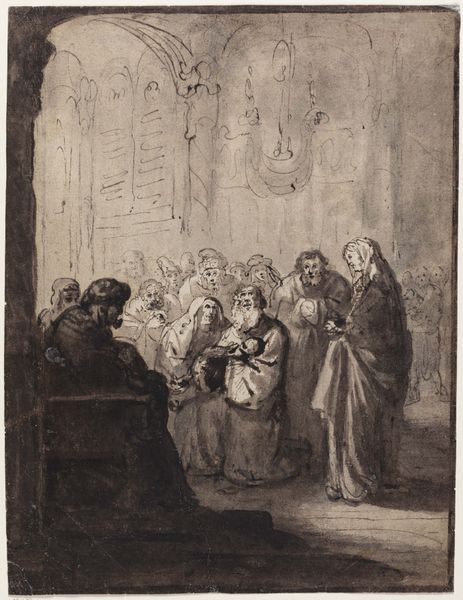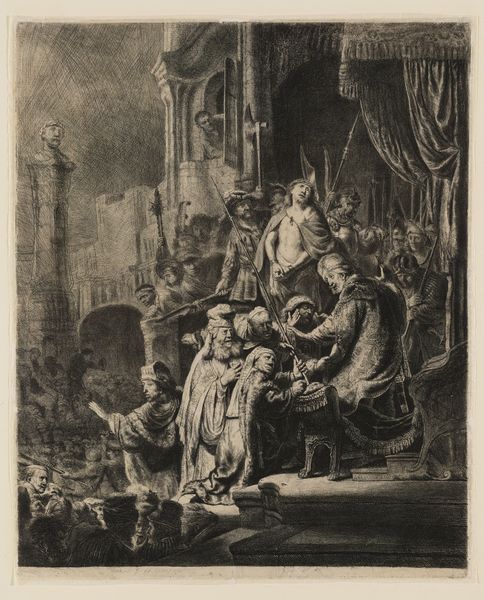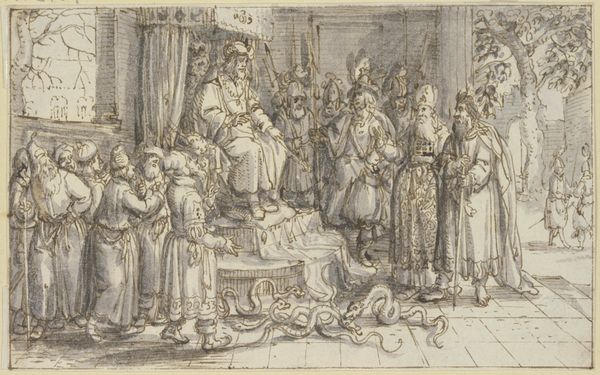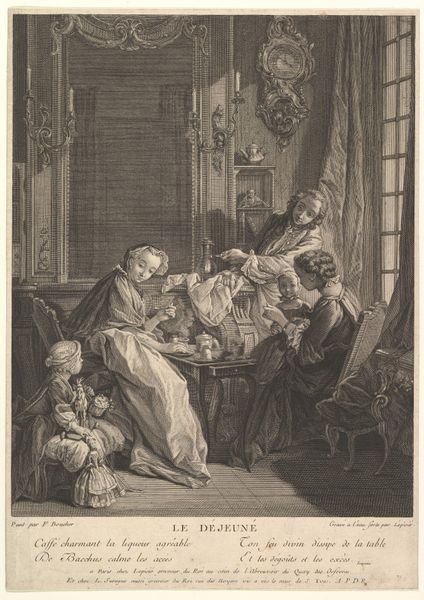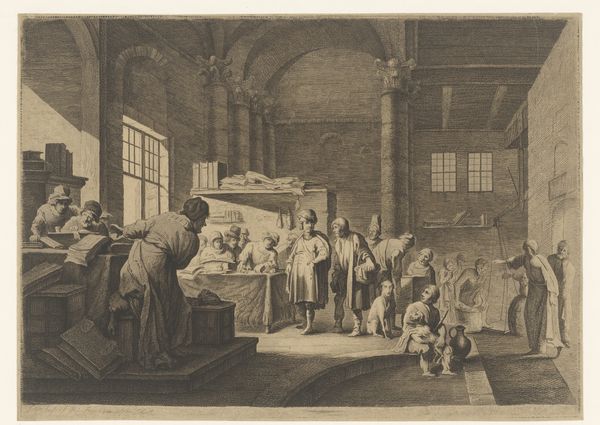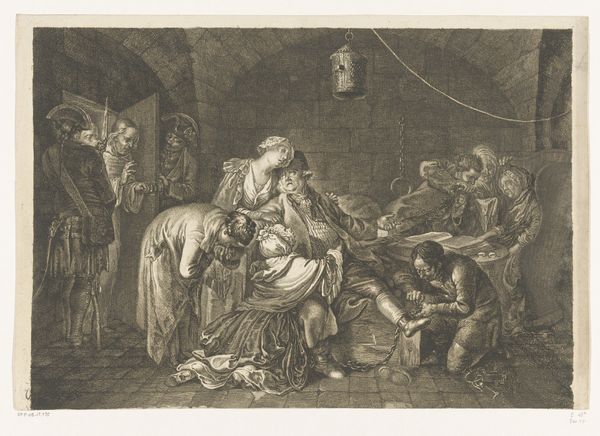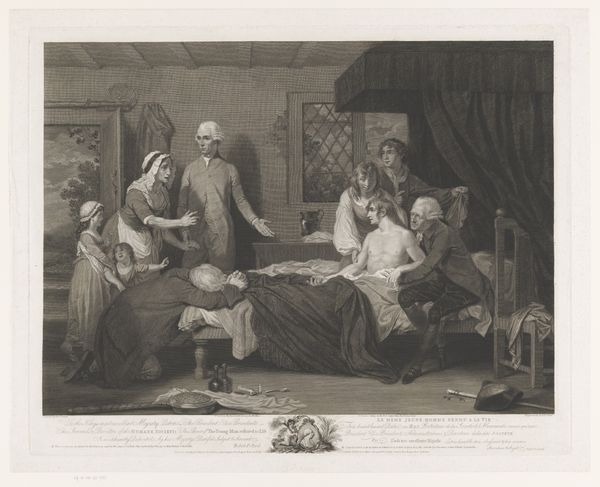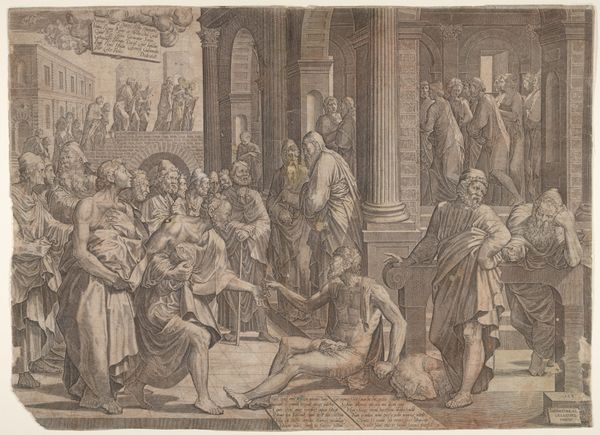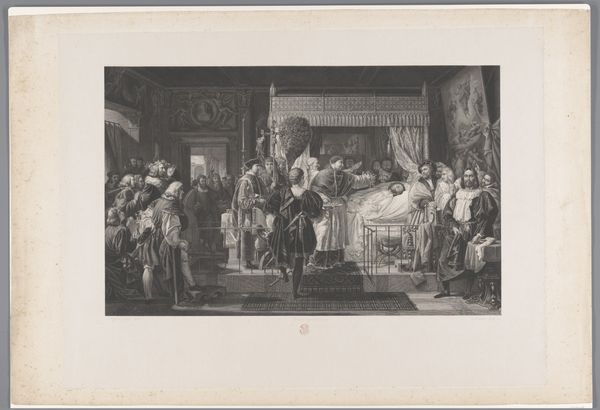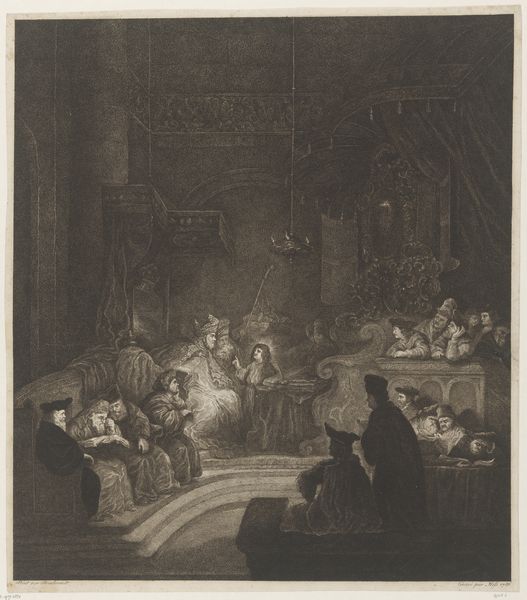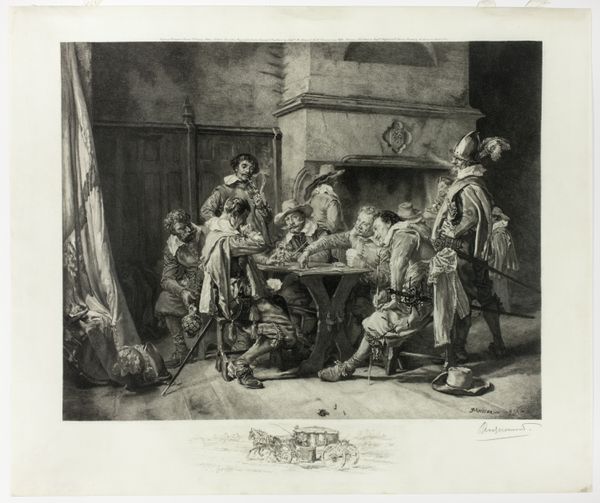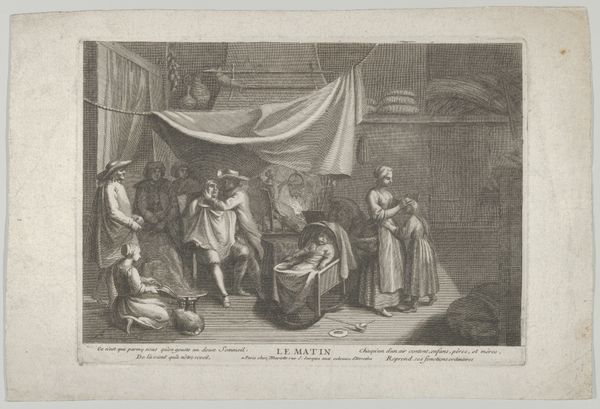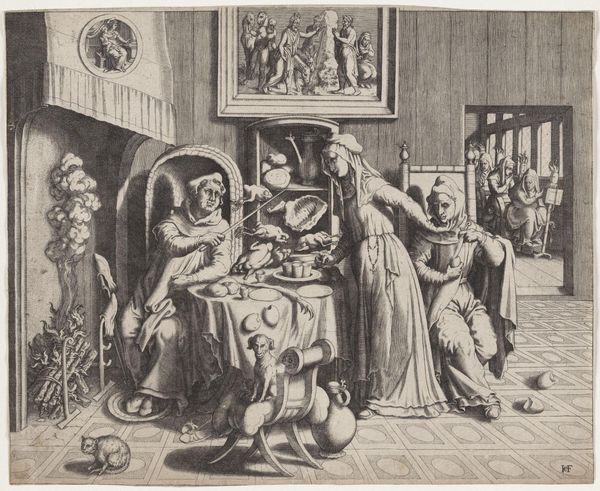
drawing, tempera, gouache, ink
#
drawing
#
narrative-art
#
tempera
#
gouache
#
charcoal drawing
#
ink
#
genre-painting
#
history-painting
Copyright: Public Domain
Curator: I'm completely drawn in by the atmosphere of this piece. It feels like witnessing a deeply private moment made public. The use of brown ink, gouache, and tempera really evokes the past. What do you make of it? Editor: Well, let's start with some context. This is “Representation in the temple” by Johann Ernst Constantin Plesch. It hangs here at the Städel Museum, though its creation date isn’t precisely known. Immediately, I see a kind of careful staging—almost theatrical in its composition. Curator: Yes! The light and shadow feel very deliberate, like spotlighting on a stage. There is so much drama, emotion and energy, which really reminds of some drawings from Rembrandt. Though, without the same sense of lightness or joy perhaps, which makes me a little uneasy. Editor: It's important to remember how these spaces - temples, churches, and museums - served as sites for constructing and reinforcing societal values through representations of faith, community, and governance. A work like this, depicting a religious ceremony, engages with complex questions of religious authority. Curator: And notice all the various smaller scenes being played out too, aside from the central exchange! There are huddled children, gossiping bystanders, solemn officiants. Editor: Exactly, there is no empty space. These crowded scenes depicting ceremony became increasingly popular because of growing interest in depicting social and religious traditions accurately. Curator: Which circles back to my feeling of being almost an intruder. But doesn’t that in itself prompt us to consider how our presence, both as viewers and perhaps as members of a specific cultural context, affects the very image that's right in front of us? Editor: It’s this kind of historical understanding – seeing the artwork as part of the fabric of its time – that helps us understand the continued appeal, and significance, of “Representation in the temple." Curator: I couldn't agree more, every look reveals yet another fascinating corner. It sparks an intense curiosity for me to witness, consider, and also really contemplate the emotions radiating out from each character. Editor: I feel like with pieces like this one by Johann Ernst Constantin Plesch we can deepen not just our artistic understanding but a great cultural dialogue.
Comments
No comments
Be the first to comment and join the conversation on the ultimate creative platform.
